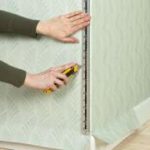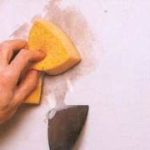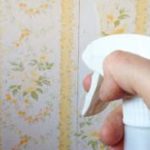Wallpapering tips and tricks from professionals for performing finishing works with your own hands.
Every work has its own lifehacks. Here are some useful wallpapering tips and tricks that will make this process – that usually requires a lot of time and patience – more comfortable.
Vinyl wallpaper tips
- Vinyl wallpaper should be glued on the basis of uniform color. Therefore, pros recommend applying a pigmented background under the wallpaper.
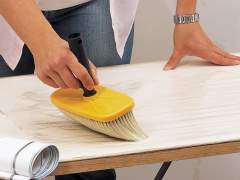
- Apply the glue not only to the sheets of wallpaper, but to the walls as well. Use the glue specifically designed for vinyl wallpaper and follow the instructions on the package. Self-made glue or glue designed for paper wallpaper may ruin your work! Use a wide roller.
- Use a soft brush, a cloth designed specifically for wallpapering or foam rubber roller to avoid the formation of bubbles under the wallpaper.
- Wallpaper edges should be trimmed from the top and from the bottom – use a very sharp knife instead of scissors.
- Use conical shaped roller for treating the seams.
- Pay attention to the fact that during processing and drying of wallpaper you should avoid extreme heat and drafts. The optimum operating temperature ranges from 55 to 75 ?F.
- Pay special attention to the rapport – the displacement of the drawing while dealing with patterned wallpaper of wallpaper with classical drawings. The length of the sheet with
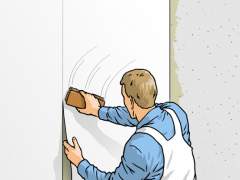 a margin on the final adjustment, excluding the drawing/pattern, must be 2-4 inches more than the height of the room. Patterned wallpaper of a rectangular type must be the same. Just put the wallpaper sheets on each other so that their edges were combined, taking into account the notation on rapport, then, cut them to the desired length.
a margin on the final adjustment, excluding the drawing/pattern, must be 2-4 inches more than the height of the room. Patterned wallpaper of a rectangular type must be the same. Just put the wallpaper sheets on each other so that their edges were combined, taking into account the notation on rapport, then, cut them to the desired length. - While cutting wallpaper with a pattern wallpaper you will notice that on every second sheet the pattern is shifted to a specified length which is the same for every next sheet – that is quite normal. If the cut part of one sheet differs from the cut part of any other sheet, you may be absolutely sure that you made a mistake!
REMEMBER: If pasting of vinyl wallpaper was carried out properly, during the next repair it will be easily and completely removed from the wall in a dry form!
Where to start?
Vinyl wallpaper is always applied “in the light of the day” – that’s a rule. It means that the pasting of the walls should be preferably started near windows. Note that the first sheet should be pasted on a strictly vertical line and should be plumb-aligned, so that the following sheets to be pasted directly.
Paper wallpaper tips
- Remove the old wallpaper from the wall completely. Dealing with paper wallpaper th
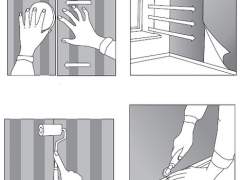 ere is ABSOLUTELY NO CHANCE that the remains of the old coating will not cause harm to the new finishing.
ere is ABSOLUTELY NO CHANCE that the remains of the old coating will not cause harm to the new finishing. - Check the strength of the water-based coatings under the old wallpaper – if something is wrong, remove them.
- Treat all the cracks and holes on the walls with putty, you may also use caulking bonding agents.
- There is no need in priming the walls every single time. But if you deal with the wall surface with high moisture or with very old and weak surface, unable to carry even the minimum loads, it should be primed.
- For wallpaper with a very smooth surface it is advisable to stick the substrate (paper for recycling). The general rule is the following: the base must be dry, solid, able to absorb moisture evenly, it must be clean, neutral and smooth.
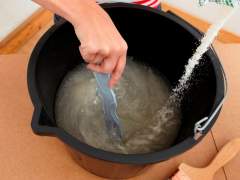 Cutting wallpaper must be perform according to the following rule: the sheet length with a margin on the final adjustment, excluding the drawing, must be 2-4 inches more than the height of the room.
Cutting wallpaper must be perform according to the following rule: the sheet length with a margin on the final adjustment, excluding the drawing, must be 2-4 inches more than the height of the room.- Working with structural and vinyl wallpaper, you can use the clip of the foam rubber, a soft brush or a cloth designed specifically for wallpapering. Working with paper embossed wallpaper, use the brush for wallpapering or a rag.
- The fabric using for smoothing the wallpaper while working should avoid keeping wet drops (on drops of the glue) on it!
We hope this article helped you to get useful wallpapering tips for performing finishing works in your apartment or house with your own hands.
